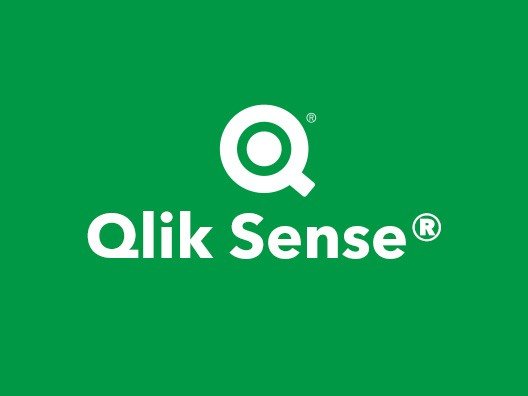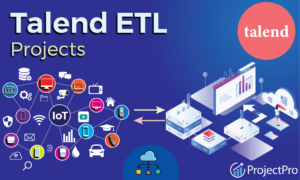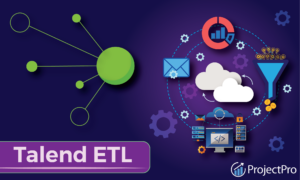Introduction to Qlik Sense

In today’s rapidly evolving data landscape, organizations are increasingly seeking methods to harness data for enhanced decision-making and operational efficiency. Qlik Sense serves as a powerful data analytics and visualization tool that empowers businesses to transform complex data into actionable insights. Its significance lies in the ability to analyze vast amounts of data quickly and effectively, making it an essential component for businesses that aim to stay competitive in a data-driven world.
One of the standout features of Qlik Sense is its associative data model. This innovative approach allows users to explore data sets without the limitations commonly found in traditional hierarchical models. Users can navigate and visualize the relationships between different data points seamlessly, uncovering hidden trends and insights that may remain undetected in other analytics tools. Such a capability enables organizations to answer pertinent questions that address their unique challenges and opportunities.
Additionally, Qlik Sense excels in its ability to integrate data from disparate sources, creating a unified view of information. This feature is particularly valuable for businesses that rely on multiple data sources, as it streamlines processes and provides a holistic perspective. By connecting various datasets, Qlik Sense enhances the quality of insights drawn, empowering stakeholders to make informed decisions backed by comprehensive analytics.
By leveraging Qlik Sense, organizations can effectively enhance their decision-making capabilities, streamline operations, and uncover critical insights. This foundational understanding of Qlik Sense will serve as the launching point for the structured guide to follow, equipping readers with the knowledge necessary to master this versatile analytics tool.
Getting Started with Qlik Sense: Setup and Configuration
Getting started with Qlik Sense involves a systematic approach to both setup and configuration. To begin, users must download the software from the official Qlik website, ensuring they select the appropriate version for their operating system. Qlik Sense is compatible with various operating systems, including Windows and Mac, allowing for flexibility based on user preferences.
Once the download is complete, the installation process can commence. For Windows users, running the installation file as an administrator is recommended to avoid any permission issues. Follow the prompts on the installation wizard, which typically includes accepting the license agreement and selecting the installation directory. For Mac users, dragging the Qlik Sense icon to the applications folder will suffice. After installation, users must configure their Qlik account, which is fundamental for accessing the software and its features.
Upon setting up the Qlik account, users are prompted to activate their subscription, which can be done through an email verification process. Initial configuration settings are critical for optimizing performance. Users are encouraged to adjust preferences such as data connection options, load times, and caching settings. Connecting to data sources is integral to utilizing Qlik Sense effectively. This software enables users to link to various data sources, including databases, spreadsheets, and cloud services, enhancing their analytical capabilities.
Furthermore, familiarizing oneself with the Qlik Sense interface is essential. The platform’s user-friendly design allows for intuitive navigation. Users can easily explore features such as data visualization tools, dashboard creation, and collaboration options, all of which are foundational for mastering Qlik Sense. Ultimately, establishing a solid groundwork through proper setup and configuration will empower users to leverage the full potential of Qlik Sense, paving the way for effective data analysis and business intelligence practices.
Building Your First Qlik Sense Application

Creating your first Qlik Sense application can be an exciting venture that opens up a world of data insights. To start, the initial step involves loading data into the application. Open Qlik Sense and select “Data Load Editor” from the hub. Here, you can connect to various data sources, such as CSV files, Excel spreadsheets, or databases. Qlik Sense employs a script-based approach, but its intuitive interface allows users to load data effortlessly by utilizing the ‘Add data’ button. Once you have selected your data source, follow the prompts to load the desired tables.
After loading your data, it is crucial to focus on data modeling basics. In Qlik Sense, data relationships are automatically generated, but for optimal analysis, you might need to create associations between tables. Utilize the data model viewer to visualize connections and ensure the accuracy of your relationships. This stage is vital as it lays the groundwork for effective data exploration and reporting.
With your data structured, you can begin designing dashboards and visualizations. Qlik Sense offers a user-friendly drag-and-drop feature that simplifies chart creation. To create a new sheet, click on “Create new sheet” and then drag dimensions and measures onto the canvas to design charts tailored to your data insights. Customize your charts by adjusting settings such as colors, labels, and titles to enhance clarity. Make use of filters to allow users to drill down into specific datasets, enabling a more interactive experience.
Organizing your layout is also essential for user experience. Group related visualizations logically and ensure that the most critical insights are easily accessible. Real-world examples can inspire best practices, such as placing key performance indicators (KPIs) at the top of the dashboard for quick assessments. By following these actionable steps, you’ll be well on your way to mastering the art of creating effective Qlik Sense applications.
Conclusion and Key Takeaways
In this guide, we have explored the essential components of Qlik Sense, a powerful tool for data visualization and business intelligence. Throughout the sections, we have examined the process of setting up Qlik Sense, creating data models, and developing insightful applications that cater to the specific needs of businesses. It is evident that Qlik Sense plays a crucial role in modern analytics, enabling organizations to make informed decisions based on comprehensive data analysis.
One of the key takeaways from our exploration is the importance of a well-structured data model as the foundation for effective analytics. Understanding how to connect various data sources and transform raw data into meaningful insights can significantly enhance a user’s ability to generate valuable reports and visualizations. Moreover, mastering the interface of Qlik Sense enables users to navigate through their data intuitively, ensuring a smooth workflow in application development.
Additonally, employing best practices during the application-building process is vital for maximizing the efficacy of data visualizations. The principles of design and interactivity can dramatically improve user engagement and comprehension of the presented information. Therefore, incorporating these strategies will contribute to more effective data storytelling.
For those looking to deepen their knowledge of Qlik Sense, numerous resources are available, including official documentation, online courses, and community forums. Engaging with these materials can significantly broaden your skill set and enhance your competency in business analytics. Ultimately, the goal is to leverage Qlik Sense to improve data-driven decision-making within your organization.
As you embark on your journey with Qlik Sense, remember to stay curious and continuously seek opportunities for improvement. Embrace challenges as learning experiences, and do not hesitate to explore advanced features that can elevate your analytical capabilities. By doing so, you empower yourself to unlock the full potential of Qlik Sense in your business analytics endeavors.







